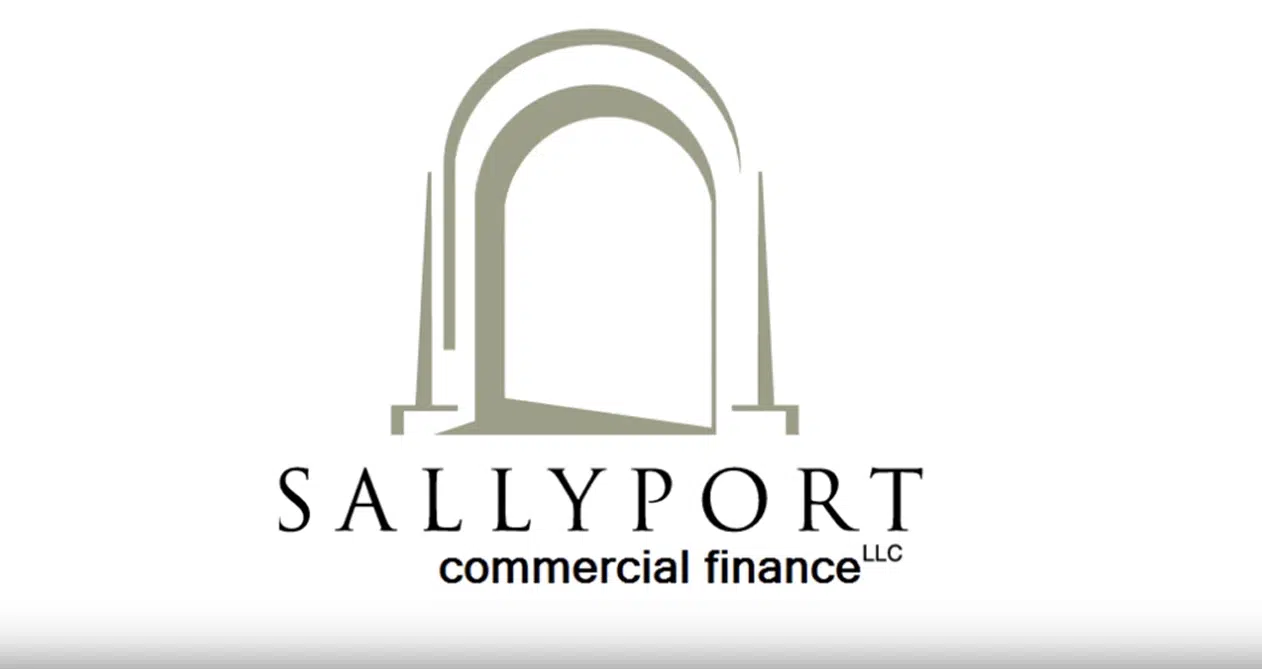Articles & Videos
A to Z of Small Business Finance and Credit Terms

Most small business owners go into business to follow a passion or create freedom in their career and lives. It’s fair to say not many go into a new venture with a great handle on small business finance although at some point, access to funds will be needed to scale and expand the business. Getting familiar with some of the more commonly used small business credit terms can make decisions easier and less intimidating when the need for finance arises.
Here’s our A to Z of the terms you might come across, some will be more recognizable, others need a little more explanation but having an overview will hopefully make it a little easier to research your finance options.
- Assets
An asset is any owned physical or intangible resource that has a value and that value may be used as collateral when applying for a business loan or other finance.
- APR
Annual percentage rate (APR), refers to the annual rate of interest levied on a loan, line of credit or credit card facility.
- Business Credit Score
Although lenders may look at your personal credit score when assessing risk for business funding, it’s a completely separate rating to your business credit score. A business credit score is a scale from 1 to 100 and each business credit bureau will have a different way to calculate it. Most small business lenders will require a score of 75 or more to access financial products. Often, lack of time to build a good credit score can be a barrier for a younger business in accessing conventional forms of financing.
- Cash Flow
Cash flow is the money flowing into and out of a business. Cash flows in (hopefully) from customers buying your product or service and cash flows out in the form of all kinds of expenses – labor, taxes, supplies, rent and so on. Businesses that don’t receive immediate payment for goods and services, which happens in a variety of industries, can suffer negative cash flow situations as the amount of cash going out exceeds the amount coming in over a given period.
- Collateral
Collateral can be any form of a business’s assets that a lender accepts as security for a loan. If a borrower defaults on a loan, the lender may then sell the asset to recoup its losses. If cash flow becomes a concern, the company’s accounts receivable can be used as a source of collateral to help them qualify for a loan or line of credit.
- Direct Costs
Direct costs in a business are any costs that are incurred directly in the production of goods and services to sell or the cost of purchasing wholesale products for resale. These costs can fluctuate due to external factors just as is happening at the moment with supply chain constraints as a result of COVID-19 disruption and it’s this lack of supply that forces direct costs for raw materials to increase.
- Debt-for-Equity Swap
This is a debt restructuring method used primarily by businesses in financial distress and going through a form of restructure. Creditors of the company could agree to forego some or a portion of the debt in return for a share of equity in the company.
- Debt Service Coverage Ratio (DSCR)
This refers to the ratio of cash available for your business to repay or service its debt commitments including any principal and interest amounts payable on loans. DSCR is calculated by comparing a business’s level of cash flow to its debt obligations and some lenders will use this to decide whether to approve your small business loan and what terms they might impose. A DSCR of more than one indicates that you may comfortably afford to repay the loan.
- EBITDA
Earnings before interest, taxes, depreciation and amortization (EBITDA) is a measure of profitability. Whilst it’s not reported on financial statements in the US or Canada, it can be calculated using the business’s income statements. EBITDA is widely used by lenders as an indicator of the general health of a company and is used to determine how much they’re willing to lend and whether the business has the ability to repay their debts.
- Equity FInancing
Equity financing is a method of raising funds for a business where the owner sells shares in the company in return for investment. Venture capital is a form of equity financing. This form of finance is in contrast to debt financing, where the business borrows money from a lender and pays it back and therefore retains ownership of their business.

- Factoring
Factoring is a form of alternative finance that is still relatively unconsidered by businesses seeking funds. Just as cash tied up in unpaid invoices may be used as collateral for a loan or line of credit, they may also be ‘sold’ to a factoring company. The invoice factor pays the business a percentage of their outstanding invoices, usually around 80%, with the remainder being paid when the debtor pays their invoice, minus the factoring company’s fee. All kinds of businesses can benefit from invoice factoring; those with seasonal sales cycles, professional services that have to wait for extended periods to get payment and new businesses with minimal collateral but demonstrating big potential in their forecasts. The advantage of this financing method is that it doesn’t mean taking on any further debt for those that have
- Gross Profit
This is a measure of the company’s revenue minus the cost of goods sold or minus direct costs. Not all expenses are included in this measure.
- Hard Asset
A hard asset is a tangible asset or resource owned by a company, to which a value can be easily attributed. Hard assets can be both short and long-term, for example inventory in the short-term and property or machinery in the longer-term.
- Intangible Asset
This is a business asset that is non-physical in nature. It may include intangible things such as intellectual property, patents, trademarks, digital materials and customer lists. Whilst these things are more difficult to value than a physical asset, they can be very significant assets for a company, particularly in the emerging technology .
- Judgment
A judgment is a decision made by a court regarding an unpaid debt. It usually details a sum due for payment or collection.
- Key Rate
Banks and other lenders will use the ‘key rate’ to set the interest rate on a debt. In the U.S. they may utilize two rates; the discount rate and the federal funds rate. In Canada the interest rate is simply the key interest rate set by the Bank of Canada.
- Liabilities
A liability is a legal obligation for a business to repay or settle a debt. Liabilities can take many forms including accounts payable, payroll, loan payments, income taxes and warranties. Liabilities can be broadly classified into three categories – current, payable within a year; long-term, payments to continue for over a year, and contingent, may or may not happen depending on certain events.
- Line of Credit
A line of credit is a type of account offered to a business borrower with a specific amount of credit based upon credit score and history, assets, revenue and business plan and forecasts. High street lenders will typically require 2-3 years of sales history to qualify for a business line of credit.
- Lien
A lien is intended to protect a lender against non-payment of a loan. A lender can register a lien against a businesses’ asset which essentially allows the asset to be put on hold as collateral and in the event that the loan is not paid, the lender can exercise their rights under the lien to sell the asset to recover some of the unpaid loan.
- Margin
In a company’s profit and loss statement, margin is the difference between sales price and the cost of goods sold. Margin in business finance terms is a basic measure of efficiency; the higher the margin the more profitable the business is. Margins should only be compared within the same industries because certain sectors have higher than average labor or raw material costs than others and margins will likely be lower on average.
- Merchant Cash Advance (MCA)
A merchant cash advance is an alternative finance method where lenders advance funds based on what they consider the future revenue of that business to be by looking at credit card sales and other receivables flowing into the business’ account. Companies can usually get a cash advance deposited into their account fairly quickly, sometimes within hours, however rates are typically much higher than other small business finance options and it doesn’t help the business in building credit.
- Net Profit
Net profit is a measure of a business’s revenue minus the cost of goods sold, all business expenses whether direct or indirect and any taxes.
- Off-balance-sheet financing (OBS)
Certain forms of financing do not create a liability on a company’s balance sheet. If a business was to lease a piece of machinery for example, that would be recorded as a rental expense on the balance sheet and not as an asset or liability with a purchase price. For companies that are already highly leveraged, in that they have a higher debt-to-equity ratio, certain forms of finance will be more attractive as they don’t need to be recorded as debt on the balance sheet. Invoice factoring does not incur a debt for example as the business sells its accounts receivable to the factoring company for a small fee.
- Principal
Principal refers to the base amount of money being borrowed excluding any interest or fees. When you pay back a loan, the payment repays a portion of the principal and a portion of interest each month.
- Profit and Loss Statement (P&L or income statement)
This report is produced by businesses either quarterly or annually to report on revenue and operating expenses. The P&L may also be referred to as an income statement and is one of the key reports used by lenders when qualifying a business for finance.
- Personal Guarantee
Some new businesses, tech-startups and professional services for instance, won’t have any large assets that they may leverage for collateral on a loan or other finance and they could then be asked to sign a personal guarantee by the lender. Signing a statement of personal guarantee asserts that you as an individual will be liable personally for the business’s debt in the event the business fails and the loan cannot be repaid.
- Quick ratio
A quick ratio is a common way for a lender to measure a company’s short-term liquidity. Sometimes called the acid test ratio, it’s a simple calculation of liquid assets including accounts receivable that can be quickly converted into cash divided by short-term liabilities. Quick ratio gives a useful insight into a business’ ability to pay off its current liabilities, although it’s not a complete measure of overall health. The credit terms offered to customers have a big impact on quick ratio. A company with extended payment terms of 120 days or more can have a low quick ratio because despite having a healthy amount of accounts receivable, they may not have the cash on hand to pay short-term expenses such as payroll.
- Revolving line of credit
Similar to a standard line of credit, however this is a more flexible arrangement whereby the initial agreement is to lend a specified amount of money and once that is repaid by the business, the amount can be borrowed again. The primary advantage of this type of funding is flexibility. Repayment terms are more flexible than a loan and the funds can be put to use wherever the business needs them whether that’s to pay regular bills or purchase new equipment. A revolving line of credit is a good option for businesses that have good credit scores but have more seasonal sales cycles and need to use credit to see them through a few months of lesser cash flow.
- Statement of Shareholder’s Equity
Where a business has been financed by equity finance and has shareholders with controlling interests, they are obliged to create a financial report that details any changes in equity on the balance sheet.
- Tax Lien
A tax lien is a legal claim registered against property or assets of a business that fails to pay its taxes owing to the government. It’s vital to try and avoid this situation as the lien may be lifted after the debt is paid, however it can do much more damage to the business’ credit score and affect their ability to secure finance in the future.
- Universal Commercial Code (UCC) or the Personal Property Security Act (PPSA) in Canada
A UCC in the U.S. is a form that a creditor files to state their interest in the property of a debtor. It allows the lender to formally lay claim to asset(s) that a client has put forward as collateral for finance. You may see a UCC noted on a business credit report and they can be levied on real estate or any other asset but the main thing to remember is to regularly check credit scores for expired liens once the debt is repaid and request their removal whenever possible. A PPSA is the equivalent process in Canada for registering liens and each province has its own rules and regulations.

- Venture Capital
Venture capital (VC) is a type of financing for startup companies and entrepreneurs of small business that have the potential to grow big very quickly. These types of businesses don’t generally have access to mainstream capital and approach venture capital investment firms to provide for their startup or growth. VC is not easy to secure as investors are very selective about what they add to their portfolios and often demand a big equity share of the company plus take an active role on the board and entrepreneurs must therefore relinquish some control over their business.
- Working capital
Working capital is essentially a business’s current assets minus its current liabilities and is an indication of a company’s liquidity. Assets can be cash in the bank or anything that can be converted to cash within a year such as equipment, inventory and real estate. Liabilities would include accounts payable, taxes owed and dividends that need to be paid over the period of the coming year.
It’s essential to maintain a positive working capital position to be able to pay for the day-to-day operations of a business such as making payroll and paying short-term debt even if sales were to take a temporary dip.
- X-Efficiency
OK so this is one you probably won’t ever hear in relation to modern finance but in the interests of completeness, x-efficiency is a theory proposed in 1966 by Ukranian professor, Harvey Leibenstein that suggested not all companies were as efficient as they possibly could be when there’s a lack of competitive pressures. In a monopoly situation or conversely, in a market with intense competition, Leibenstein asserted that workers and management were not motivated to maximize output in these conditions because there was little action they could take that could actually change their market position and consequently they weren’t as productive.
- Yield
Yield is closely connected with interest rates. In a lending situation, interest rates are connected to money borrowed and yield is connected to the cash being lent. They are interrelated as both parties need to be satisfied with the transaction; borrowers with regards to the interest rate offered and lenders with regards to profitability.
- Zero Balance Account
A zero-balance account (ZBA) is exactly as it sounds; keeping a business bank account that usually has a balance of zero. Companies sometimes do this to keep as much cash as possible in a higher-interest account and transfer funds into the ZBA only as and when their accounts department needs to make payments. In this way they can maximize the revenue on their funds.
Don’t let finances weigh you down
As you can see there are a lot of things to know about small business finance and credit terms. You can’t possibly know everything or prepare for every eventuality when there’s always something new to learn and never enough time in the day for a business owner with so many hats to wear.
Even if you don’t need finance at this point, setting aside a bit of time each month to get an awareness of the basics will enable you to confidently discuss your options and take the pressure off when the time comes to invest in the business’s future.
If you prefer talking over your options, our team are always happy to help with any questions you might have.
Search
News
$1M Funding Fuels Agri-Business Growth Across Borders
Sallyport is pleased to announce a new partnership with a Canadian agriculture business, providing a $1,000,000 Accounts Receivable facility to…
Read MoreFueling EdTech Growth with $5.5M in Tailored Financing
Sallyport is excited to support a forward-thinking education technology company with a $5.5M combined Asset-Based Lending facility, including Accounts Receivable…
Read MoreArticles
How to Establish Business Credit for the First Time
Access to business credit can be a lifeline when businesses most need it, providing cash flow for payroll, purchase of…
Read MoreInvoice Factoring Vs Invoice Financing: What’s the Difference?
There’s a lot of confusion among small business owners who are new to accounts receivable finance about the differences between…
Read MoreVideos
Popkoffs Client Testimonial
Popkoffs Client Testimonial
View Now



